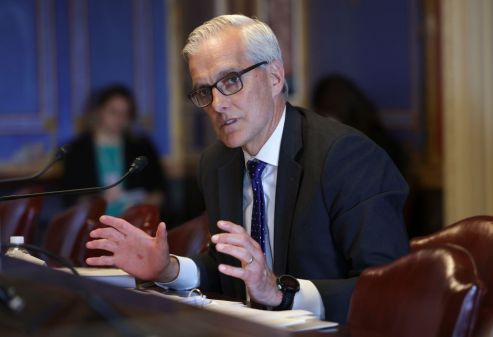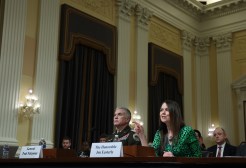
Taken individually, the technology challenges facing Charles De Sanno at the Department of Veterans Affairs are admittedly not very difficult to initiate and execute, since most have “commodity technology answers.”
“The devil is in the detail with the orchestration of over hundreds of projects,” he goes on to say.
When grouped together, though, with more than over a dozen department transformative initiatives, infrastructure challenges, contracts, architecture and anything else you can think of, the degree of difficulty goes up in a hurry, especially considering the impact they will have over the department’s strategy the next three to five years.
De Sanno, the VA’s executive director of enterprise infrastructure engineering and one of Chief Information Officer Roger Baker’s most trusted lieutenants, has coined the term “canvas orchestration” to define his role in organizing the multitude of technology projects at the departments.
“We have a number of things in flight that we can implement without issues outside of running the world’s largest healthcare system in the largest civilian government agency,” De Sanno said, “but it’s orchestrating them to work together as a full service that is where the challenge is. The devil is in the details when it comes to timing, co-existence of product, migration and leveraging the best of breed – all in timely fashion’
So, what are these initiatives?
For one, VA Secretary Erik Shinseki outlined 16 major initiatives in the department’s strategic plan over the next five years, including eliminating veteran homelessness, eliminating the backlog in the Veterans Benefits Management System and establishing a Virtual Lifetime Electronic Record for veterans.
Each of those initiatives need to harness technology to help users interact with the agency with foundations built on cloud-based platforms when possible and increase use of mobile devices that can work safely and securely on VA networks.
De Sanno also leads the data center consolidation charge, merging a number of regional data centers in the past few months with that expected to be a continuing major priority throughout 2012.
Add to the above an integrated electronic health record with the Department of Defense, migrating the legacy VISTA system with open source VISTA and projects like the “Blue Button” open data push.
“We want to make sure everything we do – no matter what it is when it comes to IT – is ensuring that we remain agile enough in operations that we can react to the business dynamics that drive the agency,” De Sanno said. “Everything we do is keeping an eye on the canvas and how it fits together and works in concert – with an eye to saving taxpayer dollars – and delivering on time or ahead of schedule … It’s a balancing act to say the least.”
A big part of that, De Sanno said, is to develop a solid over-arching strategy and have the intestinal fortitude to stick to it. Part of that is avoiding the pull of new technologies that dub themselves as the latest and greatest.
“I’ll be honest and say there will be instances where we deviate from our strategy, but its something that we’ll make sure to analyze and deliberately calculate as to the business need and overall impact to Veterans – instead of randomly taking on projects,” De Sanno said.
Since Baker has been CIO, the VA has had a disciplined approach to bringing in information technology, most notably with the Project Management Accountability System (PMAS) that brought increased accountability to all federal IT programs within the department.
“What we are doing is insuring there is management in place, cost savings and cost reductions along with elastic infrastructure required to provide services that allow us to serve veterans in the most efficient and effective means,” De Sanno said.




